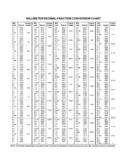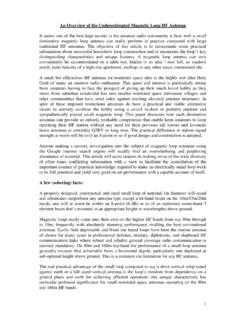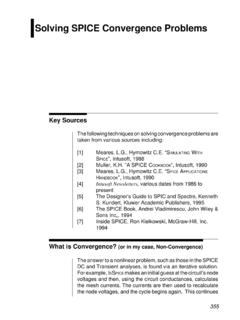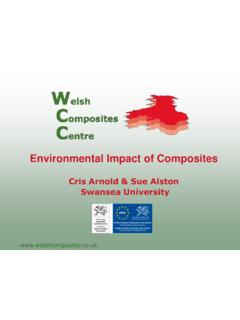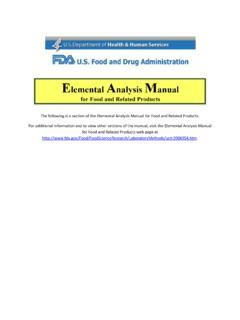Transcription of Effect of Sodium Hydroxide (NaOH) and Sodium Hypochlorite ...
1 ANNALS OF MICROSCOPY Vol 10, May 2010. Effect of Sodium Hydroxide (NaOH) and Sodium Hypochlorite (NaHClO) on Morphology and Mineral Concentration of Zea mays Hairs (cornsilk). *Wan Rosli, , Nurhanan, A. R., Farid, C. Ghazali. & Mohsin, S. S. J. School of Health Sciences, Universiti Sains Malaysia, Health Campus 16150, Kubang Kerian, Kelantan, Malaysia ABSTRACT. Prehistoric and ancient civilizations have long relied on dietary minerals in the prevention of diseases. Major minerals serve as structural components of tissues, function in cellular and basal metabolism, and in water and acid-base balance. This study is discussing on the Effect of Sodium Hydroxide (NaOH) and Sodium Hypochlorite (NaHClO) on morphology and mineral concentration of cornsilk.
2 A smear layer like soft gelatinous adherent covering the uppermost part of the NaOH treated cornsilk while the cornsilk treated by NaHClO was filled with various features of grape-like globules. The amounts of Ca, K, Mg, Mn and Zn in fresh and oven dried cornsilk were comparatively higher than in samples treated with NaOH and NaHClO. The concentration of Ca in fresh and oven dried cornsilk was accounted for 546 and 323 mg/L, respectively and higher than the concentration of cornsilks macerated with NaOH (108 mg/L) and NaHClO ( mg/L). Both cornsilk treated with NaOH. and NaHClO recorded the highest concentration of Na (30533 and 60200 mg/L, respectively). In conclusion, NaOH and NaHClO were detrimentally and distorted natural cytoskeleton of the tissues by removing essential organic and inorganic components.
3 The highest mineral contents presented in fresh and oven dried cornsilk were Ca, K, Mg, Mn and Zn. Keywords: Maydis stigma or cornsilk, NaOH, NaHClO, mineral INTRODUCTION. Herbs, also known as botanicals, are one of humanity's oldest known health care therapeutic essentials for a sustainable health, which forms the basic platform of modern medicines. Globally, multi-diverse primitive and ancient civilizations relied on herbs for healing, as do contemporary cultures throughout the world. In fact, the World Health Organization (WHO) has expressed an estimated 80% of the world's population will continues to use traditional therapies, a major part of which are derived from locally available plants. Throughout the world in the new millenium, there is now an inclination and search for stable diets with added value; thus an increasing interest in the importance of dietary minerals in the prevention of several diseases.
4 There are different types of dietary or nutritional supplements. Vitamin and mineral supplements are types of dietary supplements containing micronutrients meant to help a healthy body function smoothly. Minerals are of critical importance in the diet, even though they comprise only 4 6% of the human body. Major minerals are those required in amounts greater than 100 mg per day and they represent 1% or less of bodyweight (Lukaski, 2004). These include calcium, phosphorus, magnesium, sulfur, potassium, chloride and Sodium . Trace minerals are essential in much smaller amounts, less than 100 mg per day, and make up less than of bodyweight. Essential trace elements are zinc, iron, silicon, manganese, copper, fluoride, iodine and chromium (Ozcan, 2004).
5 Human, as well as animal, studies originally showed that optimal intakes of elements such as Sodium , potassium, magnesium, calcium, manganese, copper, zinc and iodine could reduce individual risk factors, including those related to cardiovascular disease (Sanchez-Castillo et al., 1998). Cornsilk is a collection of the stigmas (fine, soft, yellowish threads) from the female flowers of the maize plant. This yellowish thread-like strands or tassels called stigmas are found inside the husks of corn. They are relatively (4 8 inches) long with a mild sweetish taste. Cornsilks are scientifically referred as Maydis stigma or Zea mays as they reflect the soft, fiber-like growth which accompanies the ear of the corn. The stigmas are found on the female flower of corn and 4.
6 ANNALS OF MICROSCOPY Vol 10, May 2010. are collected for traditional herbal medicine remedy before the plant is pollinated (Maksimovic et al., 2005). Cornsilk is highly valued in herbology as a support to the urinary system (Maksimovic and Kovacevic, 2003). It contains silicon, B vitamins, para aminobenzoic acid (PABA) and small amounts of iron, zinc, potassium, calcium, magnesium and phosphorus (Fleming, 2000). Consilk was used to soothe the urinary tract and can give relief to the bladder, kidneys and small intestine (Ye ilada et al., 1995). Although not scientifically proven, rhetorically, cornsilks have long been reported in ancient literatures to be able to assists with prostate problems, bed-wetting, carpal tunnel syndrome, edema and obesity (Velazquez et al.)
7 , 2005). It has also been used to lessen the effects of premenstrual syndrome, and it promotes relaxation (Maksimovic et al., 2005). Because of the belief that these soft silk or hairs' are postulated to be comfortably eliminated during gastrointestinal processing, they are thus considered as an antidote for several ailments related to soothing and healing from urinary tract infections, as antispasmodic, as a mild diuretic, urinary demulcent, to pass stones and gravel from the kidneys and urinary bladder, depuratives and vermifuges (Ozcan, 2004). It is also thought to act against benign prostatic hyperplasia, cystitis, gout (Maksimovic et al., 2005), chronic nephritis and anti-hyperglycemic Effect (Li et al., 2004).
8 Similar findings have been published in several ethno-pharmacological studies dedicated to surveys of popularly used medicinal plants in various regions, or the plants used specifically for medical treatment of urological disorders (C ceres et al., 1987; Ye ilada et al., 1995). Also, some local species are used as tea, powdered as a food additive and flavorings agents in several regions of the world (Koedam, 1986; Yesilada and Ezer, 1989). Cornsilk have also been reported to have polyphenol compounds, an entity considered as an important parcel of a possible commercial viable herbal drug (Maksimovic and Kovacevic, 2003). There are indications that utilization and acceptance tendency towards medicinal herbs to give relief and treat human ailments are globally very positive although there are side effects.
9 The interest towards elucidating the chemical composition of medicinal herb products (Basgel and Erdemoglu, 2006), volatile and non-volatile components of cornsilk (El-Ghorab et al., 2007) and antioxidant activities of cornsilks (Ebrahimzadeh et al., 2008) are also growing as commercializing exploitation increases. The objective of this study is to investigate the Effect of Sodium Hydroxide (NaOH) and Sodium Hypochlorite (NaHClO) on morphology and mineral concentration of zea mays hairs (cornsilk). MATERIALS AND METHODS. Sample preparation Fresh Zea mays hair or cornsilk (dried cut stigmata of Zea mays L, Poaceae female flowers). was collected from Pantai Cahaya Bulan, Kota Bharu, Kelantan, Malaysia. Harvested samples were divided into 2 groups.
10 The samples were either macerated with (a) NaOH or (b) NaHClO. To prepare macerated samples, the cornsilk threads were soaked and agitated (Rotamax 120, Heidolph, German) for 2 hours in NaOH and Sodium Hypochlorite (NaHClO). The macerated samples were then filtered with filter paper (Whatman ). The macerated and fresh samples were then freeze dried (Ilshin model TFD5505 Korea) for 24 hours. Scanning electron microscopy The dried samples were coated with a thin-layer of gold in a vacuum evaporator (Baltex SCD005 Sputter Coater, Hi-Tech Germany) and their structure and morphology were studied in a LEO 1455 VPSEM under Pa, using the secondary electron mode, at a working distance of 10. mm and kV (Wan Rosli et al.)
